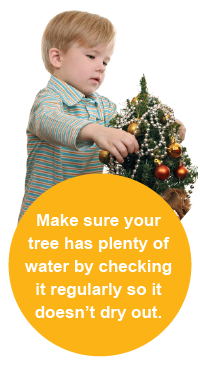HOLIDAYS
 It’s the holiday season again, a time when we enjoy festive meals with family and friends, deck our halls with colorful decorations and listen to squeals of delight as our children open their brightly-wrapped presents. To help ensure your kids have fun and stay safe this holiday, here are a few tips to remember.
It’s the holiday season again, a time when we enjoy festive meals with family and friends, deck our halls with colorful decorations and listen to squeals of delight as our children open their brightly-wrapped presents. To help ensure your kids have fun and stay safe this holiday, here are a few tips to remember.
Hard Facts about Holiday Safety
- In 2012, 3,270 children 19 and under were seen in emergency rooms for injuries caused by nonelectric holiday decorations, like broken ornaments.
- In 2012, an estimated 192,000 children were treated in an emergency room for a toy-related injury.
- That same year, an estimated 136,314 children ages 19 and under were injured due to a fire or burn.
Top Tips about Holiday Safety
- Make sure your tree has plenty of water by checking it regularly. Natural trees look beautiful and smell great, but if they’re not watered regularly, needles can dry out and pose a potential fire hazard.
- Keep lit holiday candles at least 12 inches away from anything that can burn, and don’t forget to blow them out when you leave the room or before you go to sleep.
- Consider your child’s age when purchasing a toy or game this holiday season. It’s worth a second to read the instructions to make sure the gift is just right.
- Keep a special eye on small pieces, including button batteries that may be included in electronic toys. While these kinds of games are great for older kids, they can pose a potential danger for younger, curious siblings.
- Prevent burns from hot holiday food or liquid spills, simply use the back burner of your stove and turn pot handles away from the edge.
- Move the ornaments that are breakable or have metal hooks towards the top of the tree. That makes room at the bottom for the ones that are safer for young kids.
Learn More
Learn more about holiday safety tips to keep you and your kids safe.









